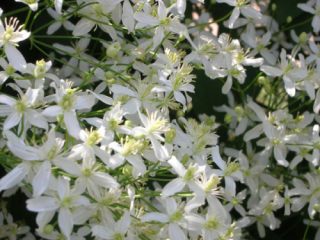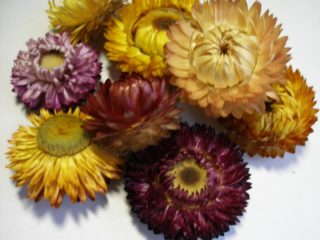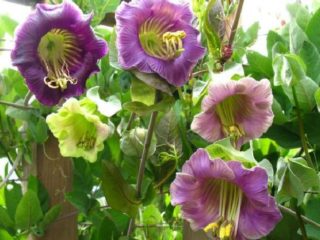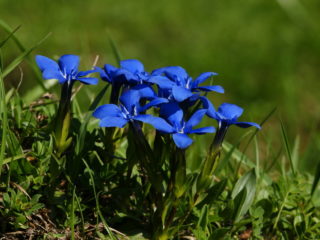Content
Clematis Lemon Dream is a large bush up to 3 m high. It produces bell-shaped flowers of a lemon hue with a grapefruit aroma. The plant is unpretentious and thrives in both sun and partial shade. The basic rules for planting and growing crops are described in the article.
Origin story
Clematis Lemon Dream was developed several decades ago. There is no exact information about the origin of the variety. However, it is known that it is not included in the Russian register of selection achievements.
The seedlings are grown in various nurseries and sold, including through online stores. The plant is valued for its delicate lemon coloring of the inflorescences. The name translates as “lemon dream”.
Description of clematis Lemon Dream with photo
Prince Lemon Dream is a perennial herbaceous plant reaching a height of 2.5-3 m. The foliage is large, longitudinal in shape, rich green in color, and has a matte surface. They can reach 14 cm in width and 21 cm in length. The type of leaves is trifoliate, with teeth visible along the edges.

Prince Lemon Dream flowers are large, with graceful petals
It is distinguished by very beautiful terry-type buds. They consist of lemon-colored petals (up to 15 pieces), arranged in several rows. Quite large, 10-12 cm in diameter. Flowering is early, at the beginning of summer. At the end of the season, the second wave begins. Therefore, the bush will retain its attractiveness most of the time.
Prince Lemon Dream is characterized by a change in the color of the petals. When the buds first open, they are whitish-green. Then they become pure white, shaped like a bell. After this, the color becomes lemon, and beautiful stamens with yellow anthers appear. Pedicels are purple. The aroma of the flowers is reminiscent of grapefruit.
Often the flowering of Prince Lemon Dream is almost continuous. This allows you to use it to decorate the garden, grow it on the balcony or terrace. In addition, the plant is unpretentious and grows well in both sun and partial shade.
Prince Lemon Dream produces vine-like shoots that can be spread along a pergola or other vertical support. The flowers are quite large and look beautiful against the background of equally decorative leaves. Moreover, the shoots of this type of clematis become woody. Therefore, he does not need support as such.
Advantages and disadvantages
Prince Lemon Dream is an attractive and large bush with liana-like shoots. Produces very beautiful flowers with a pleasant aroma. At the same time, the plant is unpretentious and tolerates even extreme frosts well.

The prince is decorative with flowers and foliage
Pros:
- large inflorescences;
- pleasant citrus aroma;
- tall bush, decorates the garden well;
- unusual shape and large size of leaves;
- undemanding to soil and care;
- long flowering in two waves;
- winter hardiness;
- does not require special pruning.
Minuses:
- due to excess moisture, roots may suffer;
- young plants without shelter may freeze.
Landing Features
It is best to plant Prince Lemon Dream in the spring - from the beginning to the end of April. It is necessary to wait until the soil warms up well and there are no severe frosts. In the southern regions, autumn planting is also allowed, which can be planned for October.
When choosing a location, you should consider several requirements:
Prince Lemon Dream grows well in an open area, but an abundance of sunlight can lead to a decrease in the size of both leaves and flowers. Therefore, it is advisable to create partial shade using a fence, tall bushes or trees.
The soil should be loose and fertile. Knyazhik can also grow on depleted soil, but in this case flowering will be more sparse and shorter lasting.
The flowerbed should be located on a small hill, since otherwise moisture will periodically accumulate at the planting site. This can lead to rotting of the root system and death of the plant.
Finally, it is worth taking care of protection from strong winds, especially in winter. It is optimal to plant Prince Lemon Dream next to protection in the form of a fence, house or large trees.
It is recommended to prepare the soil for planting the prince the day before in the spring. The area is cleaned, the soil is dug up and 5-7 kg of compost are added per square meter. If there is no time, you can form a planting hole in the spring and add a fertile mixture, for example, turf soil with humus, sand and peat in a ratio of 2:1:1:1.
The landing process itself looks like this:
- A hole is formed with a depth and width of 50-60 cm. At a distance of at least 1 m, an adjacent hole is dug.
- Place a layer of small stones on the bottom.
- Place the Prince Lemon Dream seedling in the center and straighten the roots.
- Cover with fertile soil.
- Compact so that the root collar goes to a shallow depth of up to 5 cm.
- Water generously with settled water.

It is better to plant the plant in partial shade
Care instructions
Caring for Prince Lemon Dream is not difficult, since the culture is not very demanding. It is worth following certain rules so that the bush regularly produces flowers and does not suffer from diseases. It is especially important to monitor watering, following several rules:
Young plants are given water twice a week, regularly loosening the soil. If the weather is rainy, additional moisture is not needed.
Adult princelings of the Lemon Dream variety are given water weekly, and twice as often during dry periods.
During flowering, watering should be increased, maintaining the frequency, but increasing the volume.
A month before the onset of the first frost, i.e. Around mid-September, watering is stopped completely. The last time you can give a generous portion of water - 2-3 buckets per adult Prince Lemon Dream bush.
It is equally important to fertilize the plant well. If the soil is fertile, additional fertilizing may not be necessary in the first season. But starting from the second year of life, fertilizers are given several times per season:
- in spring - urea or ammonium nitrate (15-20 g per 10 l);
- during the formation of buds - mullein infusion 1:10;
- during re-flowering - similar feeding;
- at the end of summer you can water it with wood ash (200 g per 10 liters of water).
As already mentioned, the prince of the Lemon Dream variety is a winter-hardy plant.However, young bushes should be covered. The roots are carefully mulched with leaf litter, sawdust or other material. If the vine grows on a support, the shoots are removed, tied and placed on spruce branches. The top is covered with peat; you can also use hay or sawdust.
Diseases and pests
Prince Lemon Dream may suffer from diseases to which other varieties of clematis are also susceptible:
- rust;
- gray rot;
- powdery mildew;
- wilting of leaves (wilt).
The main preventive measure is compliance with watering norms, taking into account the weather forecast. In addition, in early spring it is recommended to spray the vine with any fungicide, for example, Bordeaux mixture or Tattu.
Insects such as aphids, leaf rollers, and spider mites can also live on the Lemon Dream variety. To combat it, effective insecticides are used, for example, Colorado, Fitoverm or Aktara.
Photo of clematis Lemon Dream in landscape design
Prince looks great in single plantings, although it can be used as part of compositions: rocky hills, mixborders. The plant is tall, so it is better to choose open areas for planting. The main uses of the Lemon Dream variety in garden design are shown below:
Vertical gardening.
Single landing with garter to support.
Garter to a tree.
Attachment to the arch.
Conclusion
Clematis Lemon Dream is one of the largest species of princelings. It is attractive not only for its large flowers, but also for its unusual leaves. When growing this crop, care should be taken to apply fertilizing and regular watering.Thanks to this, flowering will be long and abundant.
Reviews of clematis Lemon Dream












